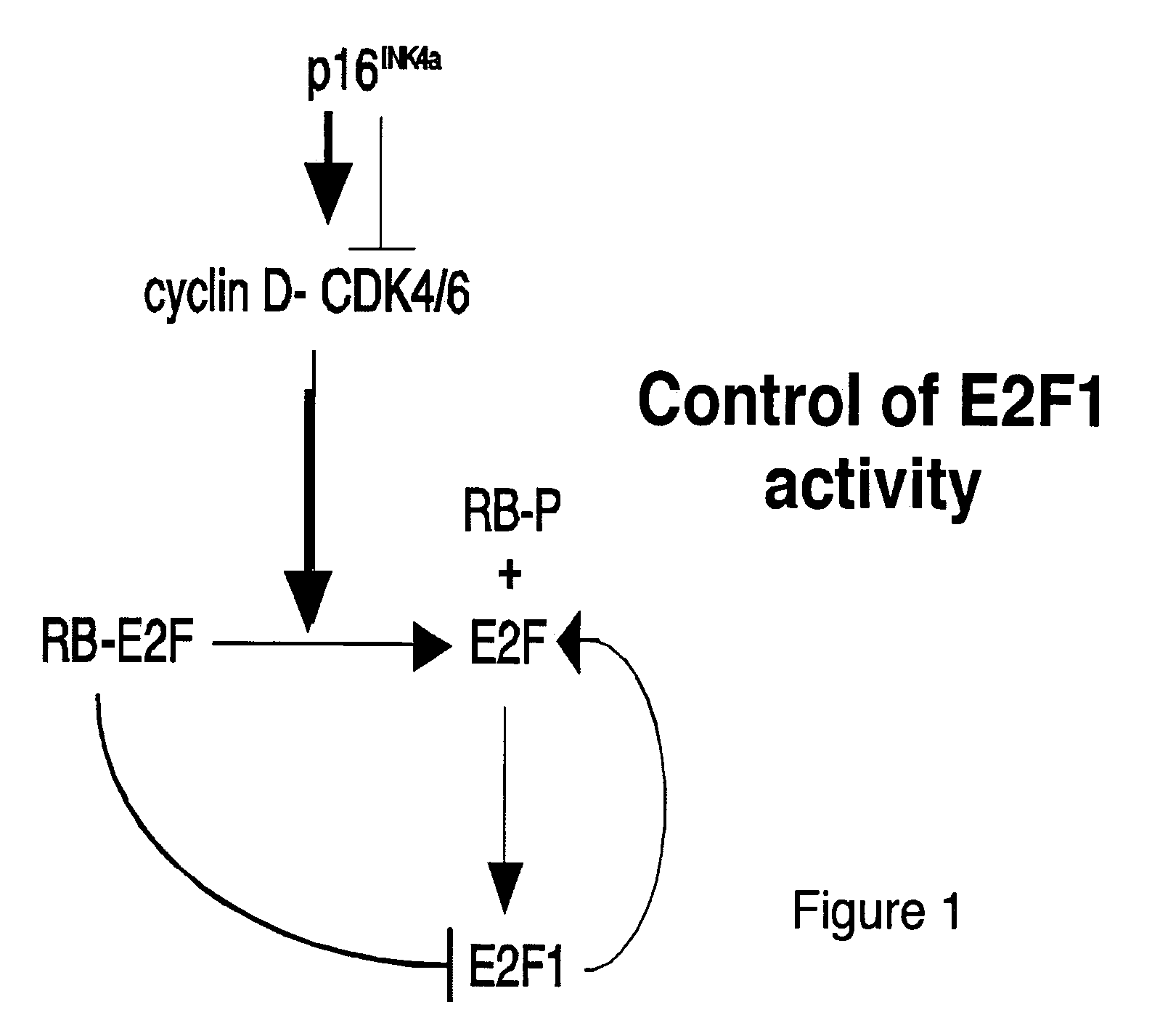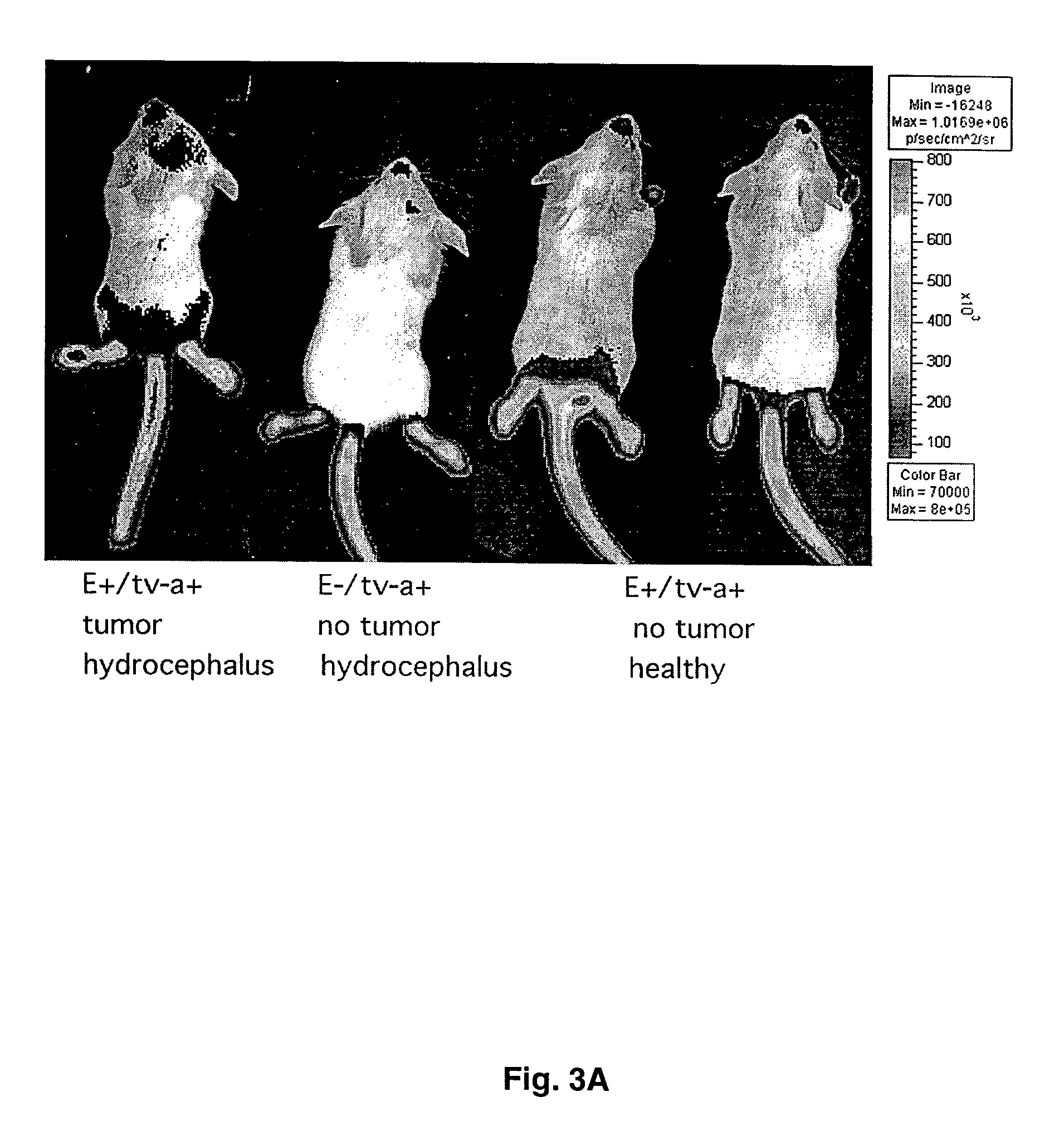Transgenic luciferase mouse
a luciferase mouse and mouse technology, applied in the field of transgenic animals, can solve the problems of pet being regarded as an expensive test, small tumors or tumors in difficult to reach areas can go undiagnosed by palpation, and cumbersome animal models
- Summary
- Abstract
- Description
- Claims
- Application Information
AI Technical Summary
Benefits of technology
Problems solved by technology
Method used
Image
Examples
example 1
Generation of Elux Transgenic Mice
[0037]The Elux reporter transgene was constructed by ligation of the E2F1 promoter obtained from David Johnson (MD Anderson Cancer Center) with the firefly luciferase as illustrated in FIG. 2. The E2F1 promoter used includes 208 nucleotides upstream, and 66 bases downstream of the transcription site. The sequence contains several binding sites for E2F1 as well as binding sites for the transcription factor SP1. This was digested with EcoR1 and Stu1 and ligated to the gene encoding firefly luciferase digested with compatible restriction enzymes. These fragments were incubated with DNA ligase and used to transform E. coli. The plasmid DNA was then purified and characterized by sequence analysis. This analysis indicated a point mutation in the E2F1 promoter that resulted in a change in the sequence relative to the published sequence as indicated in FIG. 2. The mutation indicated did not affect the binding sites for any known transcription factors, and t...
example 2
The Use of Elux Transgenic Mouse as a Glioma Animal Model
[0038]The following examples demonstrate Elux transgenic mouse can be used to monitor the formation of tumors in genetically defined tumor models such as germline modification or somatic cell gene transfer technologies.
[0039]Germline modification models of tumor formation such as transgenic mice or mice with targeted deletions, conditional knockouts, and inducible systems can be crossed into the Elux transgenic background. When these models form tumors, the deregulation of the Rb pathway is identified as the expression of the Elux transgene and detectable by bioluminescence. This allows non-invasive monitoring of tumor presence and activity in response to therapeutic and genetic intervention.
[0040]As an illustration of the use of Elux in somatic cell gene transfer models, the inventors have generated gliomas in mice harboring the Elux transgene. The Elux transgenic line was crossed with the Ntv-a transgenic mouse line. These d...
example 3
In Vivo Imaging of Tumors
[0041]Animals were weighed prior to the acquisition session for proper dosage calculations. A fresh sterile solution of D-Luciferin (Xenogen, XR-1001) was prepared in the following dosage: 150 mg / kg D-Luciferin in 3 ml / kg Normal Saline. The solution was sterilized by filtration through 0.22 μm syringe filter. Individual dosages were drawn into sterile insulin syringes for each animal based on the body weight. Prior to the injection, individual syringes were kept in dark. During all the procedures D-Luciferin was protected from light.
[0042]Inhalation anesthesia machine was connected to the gas inlet hose of the IVIS. Gas inlet selector was turned into the “gas on” position. The outlet hose has to be connected to the central vacuum system and the valve open for a low flow active aspiration of the chamber air to eliminate exposure of the operator to the inhalation gas mixture and to avoid the animals' overexposure to the anesthetic. The inhalation anesthesia ma...
PUM
| Property | Measurement | Unit |
|---|---|---|
| red wavelengths | aaaaa | aaaaa |
| temperature | aaaaa | aaaaa |
| weight | aaaaa | aaaaa |
Abstract
Description
Claims
Application Information
 Login to View More
Login to View More - R&D
- Intellectual Property
- Life Sciences
- Materials
- Tech Scout
- Unparalleled Data Quality
- Higher Quality Content
- 60% Fewer Hallucinations
Browse by: Latest US Patents, China's latest patents, Technical Efficacy Thesaurus, Application Domain, Technology Topic, Popular Technical Reports.
© 2025 PatSnap. All rights reserved.Legal|Privacy policy|Modern Slavery Act Transparency Statement|Sitemap|About US| Contact US: help@patsnap.com



